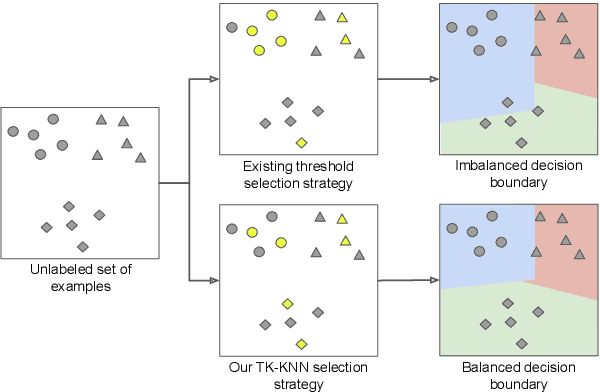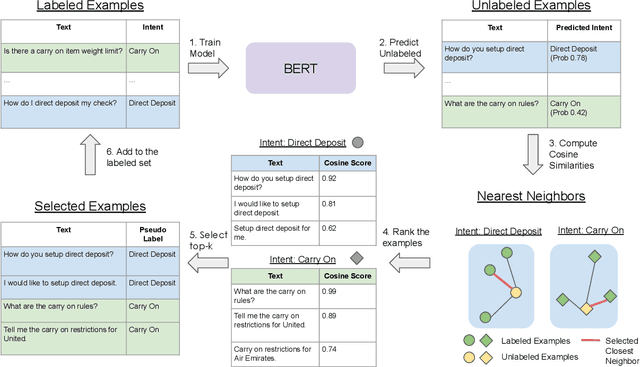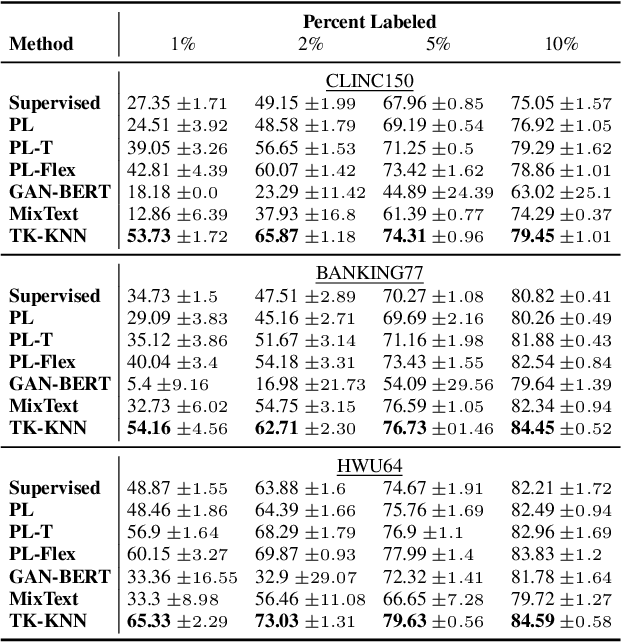David Vasquez
TK-KNN: A Balanced Distance-Based Pseudo Labeling Approach for Semi-Supervised Intent Classification
Oct 17, 2023



Abstract:The ability to detect intent in dialogue systems has become increasingly important in modern technology. These systems often generate a large amount of unlabeled data, and manually labeling this data requires substantial human effort. Semi-supervised methods attempt to remedy this cost by using a model trained on a few labeled examples and then by assigning pseudo-labels to further a subset of unlabeled examples that has a model prediction confidence higher than a certain threshold. However, one particularly perilous consequence of these methods is the risk of picking an imbalanced set of examples across classes, which could lead to poor labels. In the present work, we describe Top-K K-Nearest Neighbor (TK-KNN), which uses a more robust pseudo-labeling approach based on distance in the embedding space while maintaining a balanced set of pseudo-labeled examples across classes through a ranking-based approach. Experiments on several datasets show that TK-KNN outperforms existing models, particularly when labeled data is scarce on popular datasets such as CLINC150 and Banking77. Code is available at https://github.com/ServiceNow/tk-knn
Using Graph Algorithms to Pretrain Graph Completion Transformers
Oct 14, 2022



Abstract:Recent work on Graph Neural Networks has demonstrated that self-supervised pretraining can further enhance performance on downstream graph, link, and node classification tasks. However, the efficacy of pretraining tasks has not been fully investigated for downstream large knowledge graph completion tasks. Using a contextualized knowledge graph embedding approach, we investigate five different pretraining signals, constructed using several graph algorithms and no external data, as well as their combination. We leverage the versatility of our Transformer-based model to explore graph structure generation pretraining tasks, typically inapplicable to most graph embedding methods. We further propose a new path-finding algorithm guided by information gain and find that it is the best-performing pretraining task across three downstream knowledge graph completion datasets. In a multitask setting that combines all pretraining tasks, our method surpasses some of the latest and strong performing knowledge graph embedding methods on all metrics for FB15K-237, on MRR and Hit@1 for WN18RR and on MRR and hit@10 for JF17K (a knowledge hypergraph dataset).
 Add to Chrome
Add to Chrome Add to Firefox
Add to Firefox Add to Edge
Add to Edge